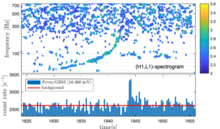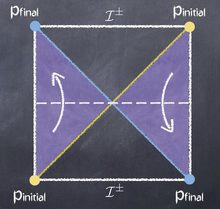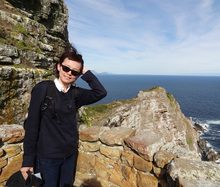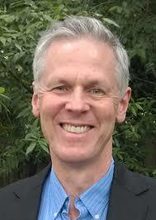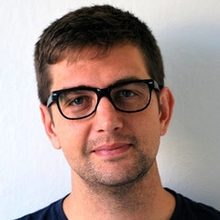Past Events
[Seminar] "Multi-messenger Extended Emission from the compact remnant in GW170817" by Prof. Maurice van Putten
2019年7月9日 (火) 15:00 〜 16:00Speaker: Prof. Maurice van Putten,
[Seminar] "Entanglement Branes, Modular Flow, and Extended TQFT" by Dr. Gabriel Wong
2019年7月4日 (木) 15:00 〜 16:00Speaker: Dr. Gabriel Wong, Fudan University
Theoretical Physics Seminar: Juan David Vasquez Jaramillo
2019年6月27日 (木) 15:30Theoretical Physics Seminar.
Speaker: Juan David Vasquez Jaramillo (Quantum Transport and Electronic Structure Theory).
Title: "Separation of Charge and Spin Nonequilibrium Green's Functions: Density and Magnetization in Spin Polarized Scanning Tunneling Microscopy (SP-STM)".
QG group meetng - dS S-matrix status report
2019年6月17日 (月) 15:30 〜 17:00QG Group meeting.
Speaker: Yasha Neiman.
Title: "dS S-matrix status report"
Theoretical Physics Seminar: Rory Cerbus
2019年5月30日 (木) 15:45Theoretical Physics Seminar.
Speaker: Rory Cerbus (Fluid Mechanics), "Kolmogorov’s phenomenology and universality of the small scales in 3D turbulence"
[Seminar] "Quantum entanglement between bubble universes"
2019年5月29日 (水) 10:00 〜 11:00Speaker: Prof. Sugumi Kanno, Osaka University
[Seminar] "Decoherence and einselection in equilibrium in an adapted Caldeira Leggett model" by Prof. Andreas Albrecht
2019年5月27日 (月) 10:00 〜 11:00Speaker: Prof. Andreas Albrecht, QMAP/UC Davis
[Seminar] "Circuit Complexity in Conformal Field Theories" by Dr. Pawel Caputa
2019年5月16日 (木) 15:00 〜 16:00Speaker: Pawel Caputa, Kyoto University
Theoretical Physics Seminar: Tosif Ahmed & Lashmi Swaminathan
2019年5月9日 (木) 15:15Theoretical Physics Seminar for Yasha's birthday.
Speaker 1: Tosif Ahmed (Information Processing Biology), "Chaotic Dynamics and the Foundations of Statistical Mechanics"
Speaker 2: Lashmi Swaminathan, "Neural Phase Space Reconstruction - A foray into the mind of a worm"
Theoretical Physics Seminar: Tosif Ahamed and Juan David V. Jaramillo
2019年4月25日 (木) 15:30Theoretical Physics Seminar.
Speaker 1: Tosif Ahamed (Information Processing Biology), "A Brief History of Motion: From Divine to Living"
Speaker 2: Juan David V. Jaramillo (Quantum Transport and Electronic Structure Theory), "Modeling Uncertainty in Spatio-temporal Biological Processes: From Gaussian Processes to Latent Forces"




